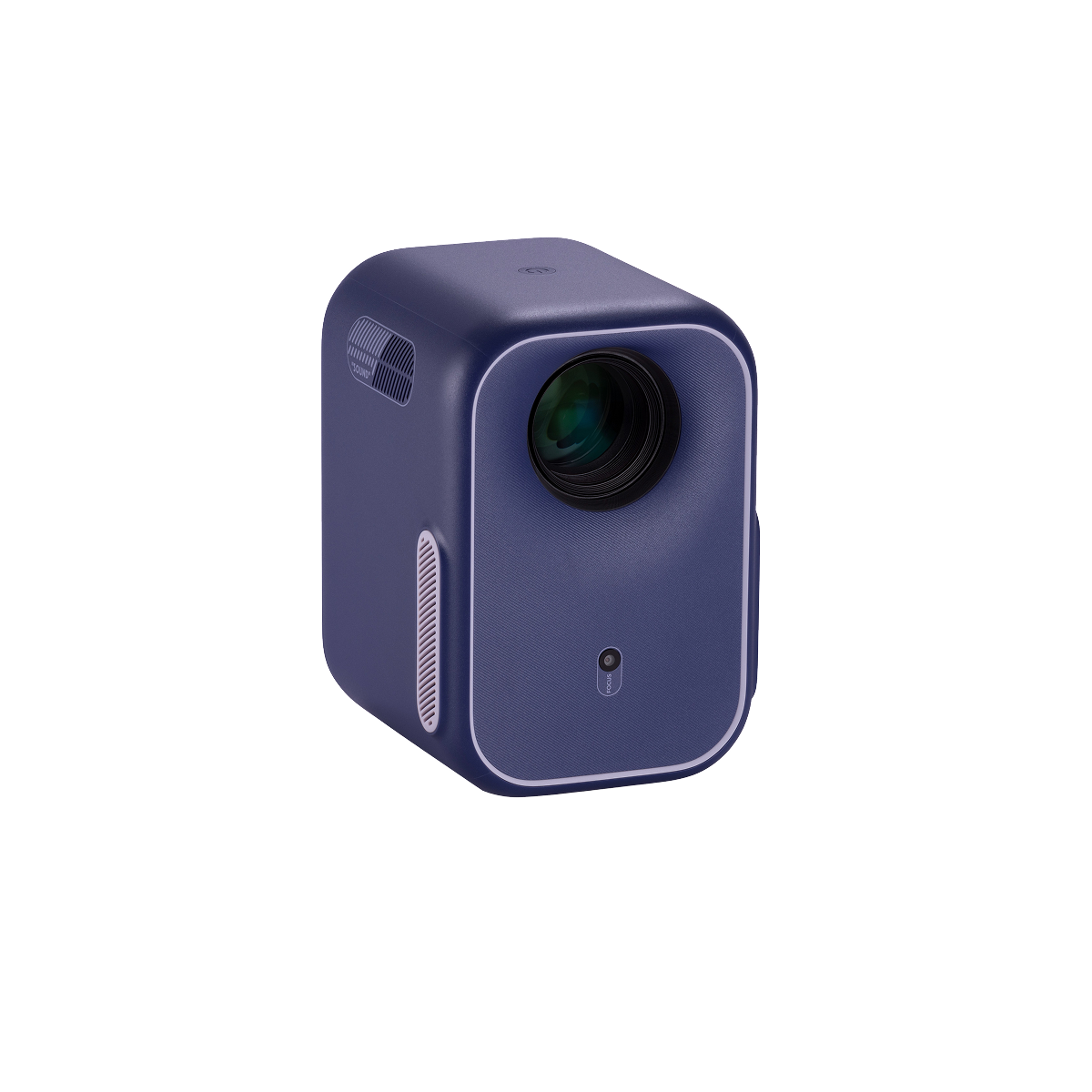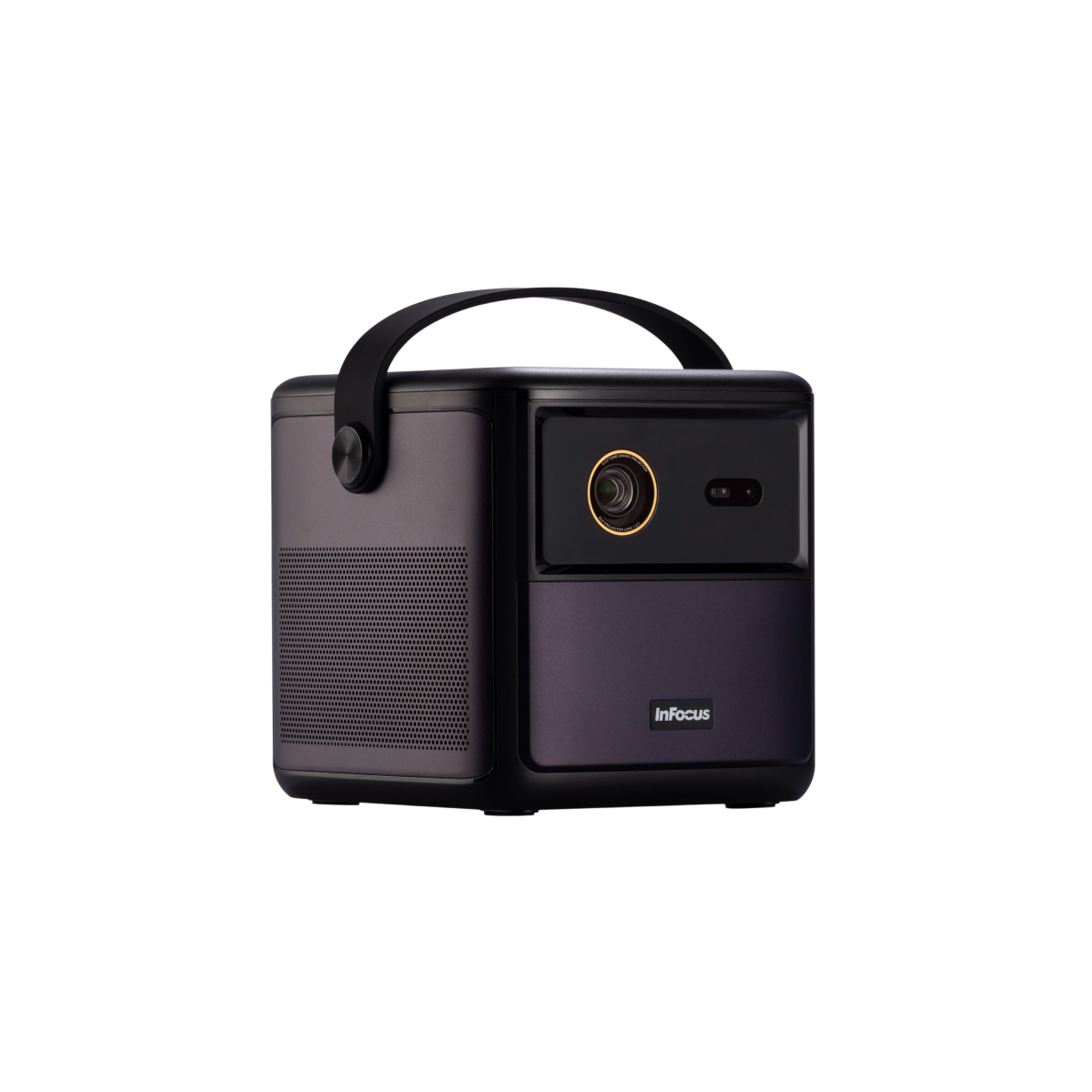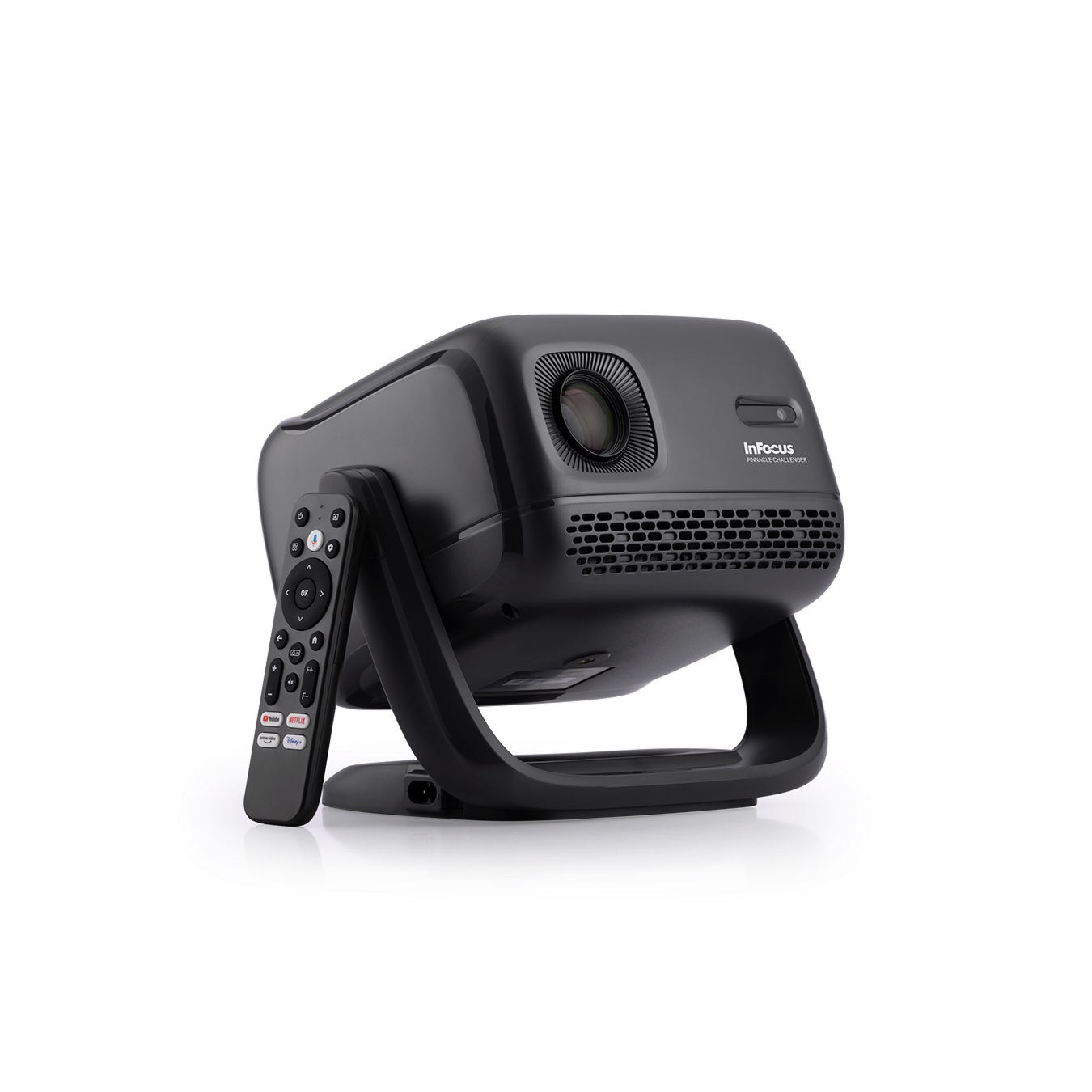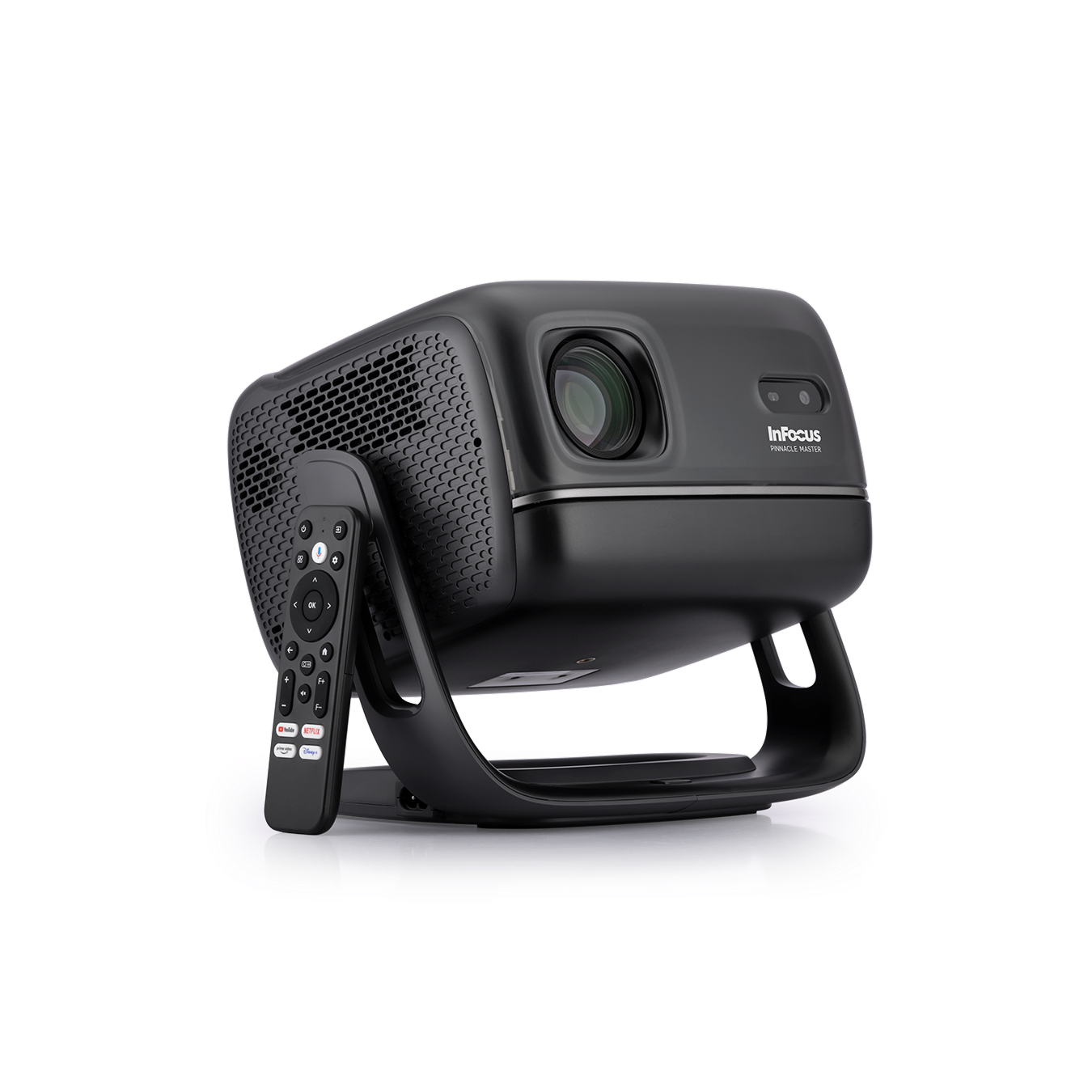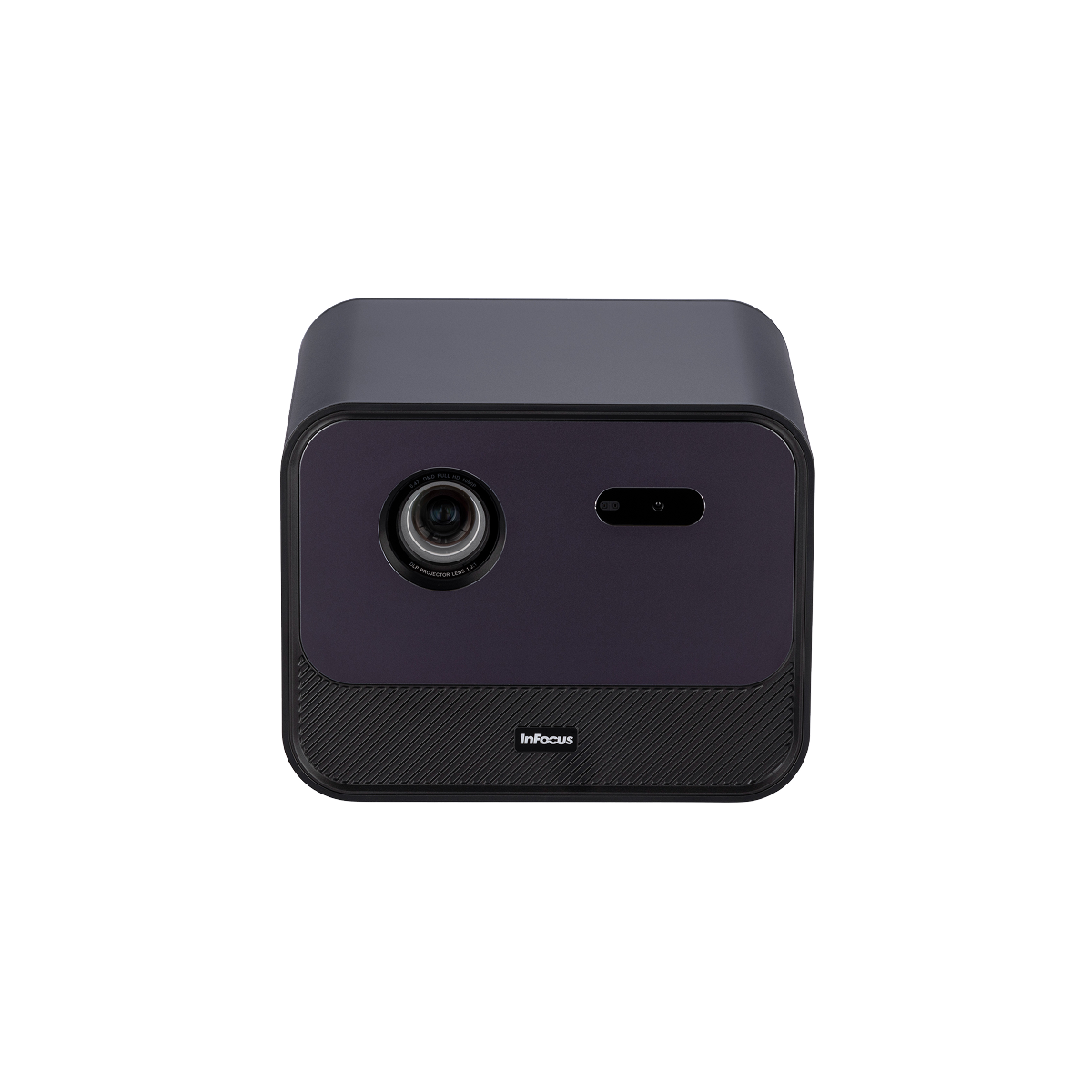Glossary of Projector Terms
To help you on your quest for the ideal projector, we’ve put together this glossary to make sure you better understand many of the terms and concepts that are frequently encountered when shopping for projectors and their associated technologies. Get more confident and go out there equipped with the knowledge necessary to pick the right model, even if it’s your first projector ever.
1080p or Full HD (FHD) resolution is a common display resolution, often denoted as 1920 x 1080 pixels. This means the image is 1920 pixels wide and 1080 pixels high.
4K resolution, also known as Ultra HD (UHD) or 2160p, refers to a display resolution of approximately 3840 x 2160 pixels. This means the image has around 8.3 million pixels, four times the number of pixels in a standard Full HD (1080p) display.
5K (5120x3200 pixels) refers to resolution. Where as 1080p refers to the height of 1920x1080, 5K refers to the width of the image resolution.
720p resolution, also known as High Definition (HD), is a display resolution with 1280 pixels horizontally and 720 pixels vertically.
An 8K projector has a resolution of 8192x4320 pixels. Where as 1080p refers to the height of 1920x1080, 8K refers to the width of the image resolution.
Jagged edges along the outer edge of objects or text. Anti-aliasing refers to software adjustments that correct this effect. This effect is created by inadequate sampling techniques in computer-produced images.
Any light in the viewing room created by a source other than the projector or screen.
ANSI stands for American National Standards Institute. It is a standard for measuring light output. Different lamps play a role on light output. Halogen lamps appear dimmer than another metal-halide, even if the two units have the same ANSI lumen rating. Type of LCD technology (active matrix TFT, Poly-Si, passive), type of overall technology (LCD vs. DLP vs. CRT), contrast ratios, among other factors can also affect the end result.
Aspect ratio is an important term to understand when it comes to projectors, as it relates to the proportion of the image displayed on the screen. It is expressed as a ratio of the width of the image to the height of the image.
Value
A remote control, projector control panel, or other object illuminated from behind. This can be helpful when working in darkened rooms.
The frequency range of a particular transmission method. In video systems, this value is expressed in MHz, and the better the signal, the greater the bandwidth required.
When projecting images on a classroom blackboard without a screen, image colours will be tinged with green. Some projectors can compensate for this. Colours and tones of projected images and characters will be similar to ones that are projected on a white screen if the "Blackboard Mode" is selected.
Video black level is the defined as the level of brightness at the darkest (black) part of a visual image or the level of brightness at which no light is emitted from a screen, resulting in pure black.
This happens when bright parts of images seem to cast their brightness onto surrounding images. Solution: Try turning down the Contrast, or if possible the colour gain controls.
Used with coaxial cables, this connector receives all R, G, B, H-Sync and V-Sync information, and composite video.
Technology developed by the U.S. firm Texas Instruments for improving the colour reproduction capabilities of DLP projectors
The professional adjustment of a projector or display to accepted standards such as Adobe RGB, DCI-P3, Rec. 709, and Rec. 2020. If a projector offers good calibration the image you get on your screen stays very close to the source material, or to the way film makers and TV producers wanted the work to be viewed by audiences. In other words, accurate colour means faithful reproduction of content. A poorly calibrated projector may depict a red car as orange, as an extreme example. You certainly don’t want that.
A colour term defining the hue and saturation of a colour. Does not refer to brightness
Colour gamut refers to the range of colours that a projector can produce. It's an important term to understand when it comes to projectors, as the ability to produce accurate and vibrant colours is a key factor in determining the overall picture quality. Projectors typically use different colour gamut standards, the most common of which are the sRGB and Rec. 709 colour gamut standards. sRGB is a widely used standard in computer graphics and digital imaging, while Rec. 709 is a standard used in HDTVs and Blu-ray discs. The colour gamut is typically expressed as a percentage of the colour space that the projector is capable of producing. For example, a projector with a colour gamut of 100% sRGB can produce all the colours within the sRGB colour space.
The total number of colours available, expressed in bits per pixel.
Since colour is effectively energetic light, temperature determines what we see. Temperatures measured in kelvins, with almost all content in the 4000-7000K range. You may encounter the term “D65”. That refers to the temperature of light during daytime and serves as a reference in many colour spaces, including Rec. 709. D65 measures approximately 6500 kelvins.
Component responsible for generating colour in projectors. Basic colour wheels have just three segments: red, green, and blue. Having multiple segments of each primary colour helps produce richer colours and wider a wider colour gamut, so good projectors have RGBRGB colour wheels (two segments per primary colour). Variations exist, such as RGBW (adds a white-dedicated segment) and RGBCWY (red, green, blue, cyan, white, yellow). Colour wheels with high primary colour purity offer the best colour performance.
When different hardware or software can be used together without a major over-haul.
Most advanced video signal format. Separated to luminance signal and two color component signals. Two different formats available (High-end DVD players provide Y.CB.CR. component video signal. HDTV decoders provide Y.PB.PR. component video signal.)
A traditional video signal format. Luminance signal and chroma (color) signal are consolidated into one video signal in this format while they are split in S-Video (or S-VHS) signal format. Usually interfaced through RCA plug and jack. (Also see "RCA Connection".)
A high contrast ratio means that there is a greater difference between the brightest and darkest parts of an image, resulting in a more dynamic and detailed picture. A low contrast ratio, on the other hand, can make the image look washed out and lack detail. Contrast ratios describe the amount of white per unit of black, for example, 30,000:1. For example, if you're watching a movie on a projector with a low contrast ratio, the black areas of the image may appear more like grey, and the white areas may lack brightness and appear dull. This can make it harder to see details in dark or bright scenes, resulting in a less immersive viewing experience. In contrast, a projector with a high contrast ratio can produce deeper blacks and brighter whites, creating a more vivid and engaging picture. This is especially important for movies with many dark scenes, where details can be lost if the contrast ratio is too low.
The ratio between white and black. The larger the contrast ratio the greater the ability of a projector to show subtle colour details and tolerate extraneous room light. There are two methods used by the projection industry: 1) Full On/Off contrast measures the ratio of the light output of an all white image (full on) and the light output of an all black (full off) image. 2) ANSI contrast is measured with a pattern of 16 alternating black and white rectangles. The average light output from the white rectangles is divided by the average light output of the black rectangles to determine the ANSI contrast ratio. When comparing the contrast ratio of projectors make sure you are comparing the same type of contrast. Full On/Off contrast will always be a larger number than ANSI contrast for the same projector.
DCI-P3 is a colour gamut standard that was developed for digital movie projection in professional cinemas. It's a standard for colour reproduction in many digital cinema projectors and has a wider colour gamut than the sRGB standard used in consumer electronics. DCI-P3 can reproduce more colours, particularly in the green and red parts of the spectrum, resulting in a more vibrant and lifelike image.
Digital light processing, a technology that uses millions of micromirrors to generate a precise image sent by a powerful light source. Compared to other projection technologies like LCD, DLP mechanisms resist dust build up and don’t require complex filters that end up degrading image quality. Most importantly, the mirrors used in DLP are extremely long-lasting, while LCD panels deteriorate much more quickly. Even if the light source (lamp) requires replacement, image quality remains at peak with DLP, while with LCD quality worsens over time regardless of how new the lamp may be.
Digital micromirror device, a precision-crafted component that has millions of tiny mirrors working together with a processor to allow projection of images in resolutions up to true 4K.
A very useful and advantageous mechanism in select projectors that’s integrated between the projector lamp and lens which opens and closes depending on the overall brightness of the projected image to adjust light output. Used to fine-tune the projected image by letting the projector enhance contrast performance, resulting in accurate dark scenes and optimized bright areas, thus preventing the loss of image detail.
Focal length is the distance between the lens and its focal point. A smaller focal length indicates a wider-angle lens.
The number of times a display refreshes per second. The more frames, the smoother video appears. TV and movie content usually uses 24 frames, video games typically run at 30 or 60, but increasingly go up to 144. Often measured in Hertz (Hz).
Full HD (FHD) or 1080p resolution is a common display resolution, often denoted as 1920 x 1080 pixels. This means the image is 1920 pixels wide and 1080 pixels high.
A measurement usually made perpendicular to screen center of the luminance transmitted by the screen, divided by the luminance radiating from the projector.
The way voltage affects brightness. Increasing voltage boosts light output and therefore means a brighter image.
When a source and a display aren’t properly synced, images can appear to have “duplicates” since the source tries to update too fast for the display.
Horizontal synchronization. A marker, which indicates to a computer or video signal that it, is the beginning of a line.
HDCP (High-Bandwidth Digital Content Protection)
High Definition Multimedia Interface, the most common home media connector and cable standard since the mid 2000’s. HDMI 2.0 and up required for 4K UHD at 60fps.
HDR technology allows for achieving brighter whites and deeper blacks. This creates brighter and more colourful displayed images, making them more realistic and dramatic.
A screen that uses one of more methods to collect light and reflect it back to the viewing audience, which will increase the brightness of the image over a white-wall or semi-matte screen.
kHz, the total number of horizontal lines scanned per second in a displayed image.
The total number of vertical lines individually perceived across the horizontal rows of a monitor.
Hybrid Log-Gamma (HLG) is a version of HDR that was jointly developed by NHK and the BBC. Unlike other forms of HDR, HLG does not use metadata, which means it is compatible with both SDR and HDR displays.
Hertz. A measure of frequency in cycles per second. Used to express the frequency of an electrical signal or event.
The delay between an image being sent out by a projector and the same image getting displayed on screen. In the context of gaming, also includes the additional delay between the screen and the controller (also known as controller latency). Measured in milliseconds, input lag of over 40ms makes video games essentially unplayable and may cause lip sync issues when watching movies and TV.
Value
When a projector is placed at an angle to the screen, the image can appear distorted. Keystone correction is a feature of projectors that helps to adjust the shape of the projected image when the projector is not placed directly in front of the screen. Most cinematic projectors have manual or automatic keystone correction. Manual keystone correction involves adjusting the projector manually by tilting it or using the keystone correction feature in the projector's menu. Automatic keystone correction, on the other hand, uses sensors or software to detect the angle of the projector and adjust the image accordingly.
Lens shift allows you to adjust the position of the projected image on the screen without physically moving the projector. Instead, it works by moving the lens assembly inside the projector to adjust the position of the projected image up or down, left or right, or diagonally. This feature provides greater flexibility in image placement, particularly when the projector is in a fixed location. Some projectors have both horizontal and vertical lens shift, allowing for greater precision and control over the position of the image. It's important to note that lens shift is not the same as keystone correction. While keystone correction adjusts the image's shape, lens shift adjusts the position of the image.
Important aspect of projector screens. The more light a material reflects, the better it is for use with projectors. Light rejection technologies increase the amount of light that reaches viewers.
Liquid crystal display, one of the leading technologies in TVs and projectors. Different from digital light processing (DLP) in that LCD panels tend to fade and change properties over time, while DLP mirrors retain their initial quality much longer and do not suffer from LCD-typical issues such as hot spotting and image uniformity problems.
Popular unit for measuring total light output and brightness.The brightness of the projected image is determined by the number of lumens the projector produces, and a brighter image can make it easier to see and appreciate the finer details in the content being displayed. A higher lumen count is especially important in well-lit rooms or outdoor settings, where ambient light can wash out the image and make it appear dull or faded. On the other hand, a lower lumen count may be more suitable for darker rooms, where a brighter image may be too harsh or overwhelming.
The International System unit of illumination, equal to one lumen per square meter. It is equal to the illumination of a surface one meter away from a single candle
Mobile High-Definition Link (MHL) is an industry standard for a mobile audio/video interface that allows consumers to connect smart-phones, tablets, and other portable consumer electronics (CE) devices to high-definition projectors. It can be used for audio and video transfer or to charge devices.
Micro Lens Array (MLA)is a way of optimizing the light output of a projector. The lens array looks like a sheet of bubble wrap, lots of small lenses that focus the light from the projector lamp. This reduces light lost through the lens system.
The “true”, hardware-determined resolution of a display source. Currently, common resolutions include full HD (1920 x 1080) or 1080p and ultra HD (3840 x 2160) or 2160p, the “p” standing for progressive scan. Measured in pixels along two axes, or in megapixels per frame.
Allows two or more devices to exchange information quickly and easily.
Value
The standard by which TV is broadcast in the US. It has a theoretical maximum resolution of 525 lines. Also has an aspect ratio of 4:3 or 1.33:1.
With many projectors, the lens is designed to project the image at a slight elevation. This allows you to project onto a vertical surface without having to tilt the projector backwards and use Keystone Correction. If you draw a straight horizontal line from your projector's lens to your wall, the distance between that point and the lowermost point of your image is your offset distance. As the throw distance increases the offset height also increases, for this reason it is quoted as a percentage of the image height. Please be sure to take this into consideration when positioning your screen.
Operating system. The system which a smart projector runs off, typically a version of Android.
On screen display. The user interface that shows up on a display when prompted by a remote control or buttons on the display itself. Ideally very minimal and intuitive.
Phase Alternation by Line. The standard colour system used throughout Western Europe, except in France. It has a theoretical maximum resolution of 625 lines. Also has an aspect ratio of 4:3/1.33:1.
Short for picture element. The smallest element in a displayed image. A colour pixel is a combination of red, green and blue sub pixels. Total pixels are usually expressed in horizontal x vertical dimensions (e.g. 640 x 480).
This problem shows up on LCD projectors. Pixilation occurs when the number of pixels that an LCD projector shows is too little for the size of the screen. As a result the picture shows up as a bunch of boxes. Solution: There are two main solutions to this problem. The first and cheaper solution is to slightly defocus the picture slightly. This will not cost you anything. The other alter native is to buy a pixilation filter. This device struts its stuff on the end of the lens and gets rid of the pixels. The problem with this solution is that it softens and blurs the picture to the point where you may not be able to read credits. It also decreases the brightness of the picture, which is critical to an LCD projector setup.
The distance from the projector lens to the screen. Image size is in direct proportion to projection distance.
Rec. 709 is a color gamut standard that enables a projector to deliver colors so real that they reflect what the human eye perceives. It's one of the most common color spaces for content presented in full HD or higher resolutions. By specifying the range of colors that can be displayed on an HD device, Rec. 709 ensures consistent and accurate color reproduction across different devices, resulting in a more lifelike and immersive viewing experience.
RGB stands for red, green, and blue, which are the primary colours of light that are used to create a wide range of colours on a projector.
An effect caused by devices that struggle to fill up pixels, or generate an image, fast enough. Results in a grid-like anomaly that resembles a screen door, hence the name. This can make the image appear less sharp or detailed and be distracting for some viewers. One way to reduce the screen door effect is to increase the resolution of the projector. Higher resolution projectors have more pixels per inch, resulting in a smoother image with less visible gaps or lines between pixels. Other factors such as lens quality, image processing, and color accuracy can also impact the overall image quality and affect the screen door effect.
Tab tension is a feature found in certain types of projector screens that helps to ensure a flat and smooth screen surface for the best possible image quality. By applying a constant tension to the screen material, tab tension eliminates any wrinkles, creases, or waves that can occur over time, resulting in a more immersive and enjoyable viewing experience. While tab tension is an important feature of some projector screens, it's not necessary for all types of installations. If you're using a fixed-frame screen that's properly tensioned and installed, you may not need the additional tab tension feature.
Throw distance is the distance between the projector and the screen that affects the projected image's size, brightness, and clarity. Short-throw projectors are ideal for smaller rooms or when space is limited, while standard-throw projectors are suitable for most types of installations. Long-throw projectors are designed for larger rooms or outdoor installations.
Ultra HD (UHD) 4K resolution, also known as 2160p, refers to a display resolution of approximately 3840 x 2160 pixels. This means the image has around 8.3 million pixels, four times the number of pixels in a standard Full HD (1080p) display.
Processing of an image to increase its resolution. For example, most 4K TVs and projectors can upscale 1080p content to 2160p, but the process may cause image compromise.
Very useful projector feature, allows maintaining image size from different throw distances. Fixed lens projectors that can’t zoom have to be physically moved when changing screen sizes, a very cumbersome process.


